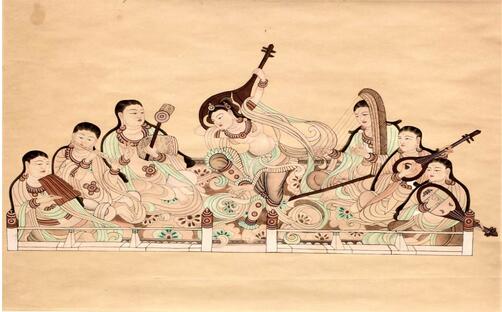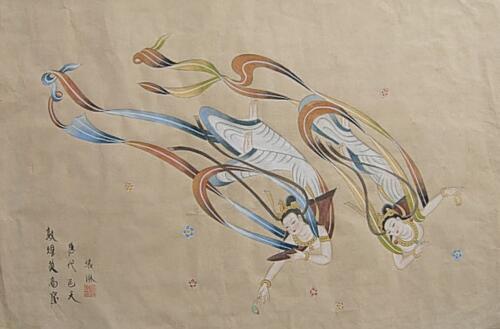Dunhuang's grottoes come to Beijing
From:CCTV.com NetWriter:Date:2016-01-15
The cave art of Dunhuang, in northwestern China's Gansu Province, dates from the Fourth-Century AD. It caused a worldwide sensation when rediscovered in the year 1900.
Now, something of Dunhuang's magic has been recreated in Beijing with an exhibition entitled "Echoes of Civilization: Crossing Dunhuang".
From its origins in the Gobi Desert, at the crossroads of the Ancient Silk Road, Dunhuang's grotto culture has come to Beijing's Imperial Ancestral Temple.
The "Crossing Dunhuang" exhibition presents 300-plus copies of mural paintings.


The cave art of Dunhuang, in northwestern China's Gansu Province, dates from the Fourth-Century AD. It caused a worldwide sensation when rediscovered in the year 1900.
"Since the Sutra Cave was discovered in 1900, the study of Dunhuang has spread around the world. Generations of Chinese artists have traveled there on a pilgrimage of Art. They absorbed and drew lessons from Dunhuang and made many copies. This exhibition showcases some of the best," said Fan Di'an, President of China Central Academy of Fine Arts.
The caves contain some of the finest examples of Buddhist art spanning a period of 1,000 years, but painting is not the only art form they have inspired. Sculptures and even installations are part of the mix.
"Dunhuang culture is not only a treasure for academic research, but also a rich source to acquire knowledge of history, art, ancient society, creativity, and life. It inspires artists to explore the relationship between Dunhuang culture and modern life, and it stimulates their imagination. Their art work reflects innovative exploration, and creative transformation, of traditional art. It's a tribute to the Dunhuang culture," Fan said.
Jointly launched by the China Central Academy of Fine Arts, the Dunhuang Academy, and the Beijing Municipal Federation of Trade Unions, "Echoes of Civilization" runs through March the 16th.

